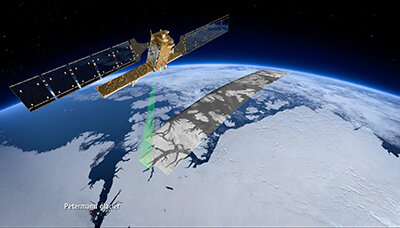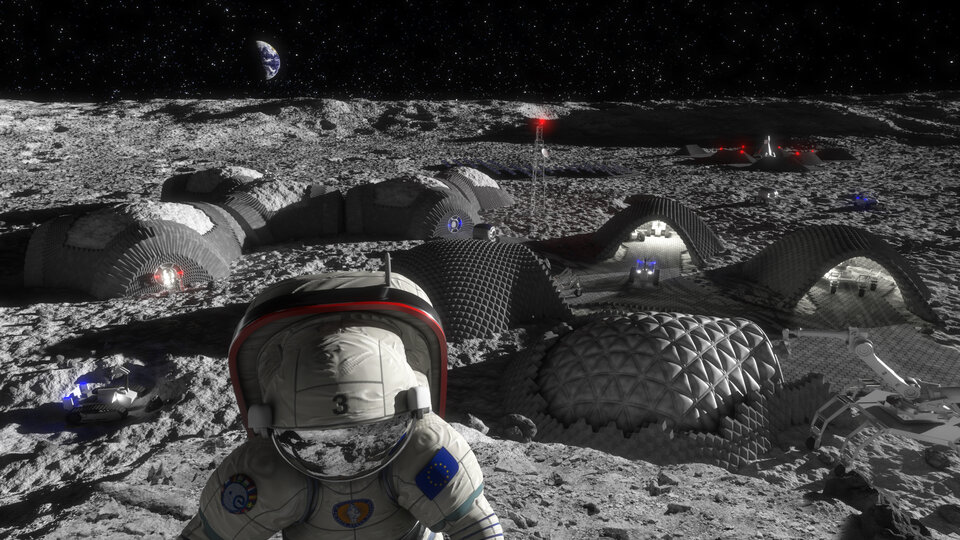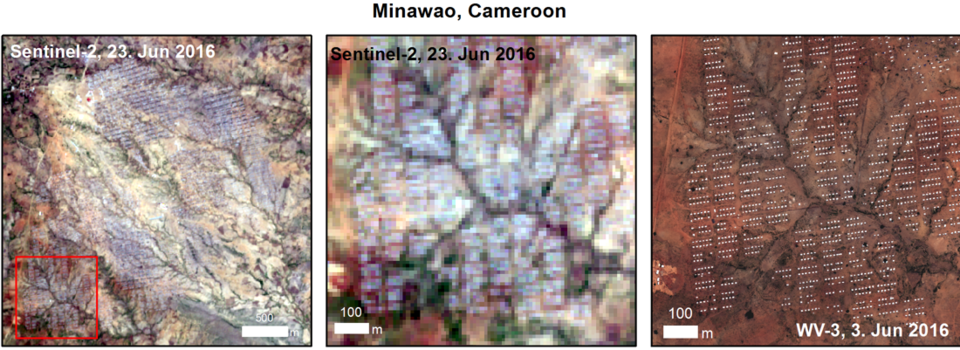Space for humanitarian action: Space19+ proposals
Space can seem distant and of little relevance when facing crises on Earth, but space technology can be a powerful tool for humanitarian action. Several of the proposals tabled for ESA's upcoming Space19+ Council at Ministerial level will decrease the barriers involved in using space to help the people on Earth most in need.
Taking place in Seville, Spain, on 27–28 November, Space19+ will define Europe's space efforts for the years ahead. The terrestrial applications of space research and technology are not always obvious, but are in fact so numerous that it can be difficult to narrow them down. Investing in space can improve many areas, such as food security through remote sensing and technology, tele-education and tele-health through satellite communications, and security and rescue services using navigation technology.


Access the video
Apart from existing services such as Copernicus and the Space and Major Disasters Charter what will Space19+ highlight as the most important humanitarian technology developments in the years to come? NGOs involved in humanitarian action should look out for technology developments across ESA's activities, especially in Earth observation and its many applications, as well as public-private partnerships arising under ESA's downstream activities.
Earth observation
Earth observation by satellites provides a wide range of global, comprehensive, accurate, repeatable and timely environmental information that is key to effectively planning and implementing humanitarian activities. Pioneering NGOs and government entities have already started exploiting the data in their activities, but the full potential of ubiquitous free information remains largely unexplored by the humanitarian sector.
ESA is aiming to team up with the World Bank and Asian Development Bank to develop available tools to deliver improvements in efficiency, impact, transparency and accountability. This will support the operations of various stakeholders in the development assistance community using Earth observation data. Combining ESA's technical capabilities with the expertise of the international financial institutions, the aim is to start an integrated programme of work called 'Space in support of International Development Aid'. This initiative was recently approved as Official Development Assistance by the OECD.

ESA's role in the programme is called Global Development Aid (GDA). GDA will develop knowledge sharing materials as well as data products that have not previously been investigated within the context of humanitarian aid. ESA will also explore new products of interest to national development aid agencies, that may be considered too ambitious for a single aid agency to address acting alone.
Building local capacity in developing countries is an important facet of another initiative: Earth Observation for Africa. Driven by user needs, the initiative will facilitate the use of remote sensing satellite data by African countries, as well as providing tools and knowledge that ultimately lead to local ownership of the processes. As Earth observation information services grow in technical capability in the target countries, African states will gain opportunities to make a giant leap forward in efficiently tracking sustainable development. Considering the problem of water scarcity and food security, this is especially important in view of the necessary transition to alternative crops with higher thermal resilience to cope with climate change.
Three new Earth observation missions are proposed for the Copernicus programme that are particularly interesting from a humanitarian point of view – the Land Surface Temperature Monitoring (LSTM), the Radar Observing System for Europe L-band SAR (ROSE-L) and the Copernicus Hyperspectral Imaging Mission for the Environment (CHIME). These missions will support the detection of natural hazards, improve food security resilience and advance water management, for example through monitoring parameters such as water availability, precipitation rates and snow cover. Furthermore, using technologies such as artificial intelligence and machine learning to predict outcomes will further increase the value of all the available data products. Interesting new applications can also be envisaged, such as using thermal heat emissions to estimate population displacements during migration, war and natural disasters.
Space technology, humanitarian technology

It is not only in Earth observation applications that ESA technology is valuable for humanitarian causes. As a research and development organisation, all of ESA's programmes create innovative technologies – many of which indirectly benefit humanitarian organisations.
Satellites will be an integral part of the upcoming 5G network, which is very much the focus of ESA's telecommunication domain at Space19+. 5G will provide cheaper and abundant Internet coverage to communities with no terrestrial infrastructure. Considering that some 327 million fewer women than men have a smartphone to access the mobile internet worldwide, this development is essential to reduce the digital gender divide.

Looking further away, human exploration research programmes have proven that by investigating how to live in space – for example on the Moon or Mars – we advance knowledge on living more sustainably on Earth. Space research and technology has already led to better-tasting crops with less waste, more efficient closed water recycling facilities and easy-to-grow nutrition supplements that can sustain life in harsh environments.
By combining space assets, we can create interesting solutions. Utilising multiple space assets – including satellite navigation, Earth observation and telecommunications – ESA supported the development of a transportable diagnostics laboratory. This sped up diagnoses during the 2014–2016 Ebola outbreak in West Africa without needing to transport samples over difficult terrain and long distances.
Public-private partnerships
But it doesn't stop at ESA's own technology developments. ESA and its Member States stand ready to support European start-ups or established businesses that want to develop space technology or services that benefit society and the economy. Ideas for applications of Earth observation data are supported under InCubed+, navigation-related products or services under NAVISP, and satellite communication developments under Business Applications. Additionally, the General Support Technology Programme supports early technology developments.

Through these programmes, NGOs and industry can get support to develop required infrastructure. For example, ESA Business Applications supported industry and Italian NGO HelpCode to develop several interesting applications to increase the effectiveness of their humanitarian work.
All happening in Seville
The above is a selection of the varied menu available at Space19+ for Ministers to enhance Europe's space capabilities within the humanitarian sector. Follow @SpaceForEarth and #ESA4NGOs to keep updated on how space is used as a tool for humanitarian action.














 Germany
Germany
 Austria
Austria
 Belgium
Belgium
 Denmark
Denmark
 Spain
Spain
 Estonia
Estonia
 Finland
Finland
 France
France
 Greece
Greece
 Hungary
Hungary
 Ireland
Ireland
 Italy
Italy
 Luxembourg
Luxembourg
 Norway
Norway
 The Netherlands
The Netherlands
 Poland
Poland
 Portugal
Portugal
 Czechia
Czechia
 Romania
Romania
 United Kingdom
United Kingdom
 Slovenia
Slovenia
 Sweden
Sweden
 Switzerland
Switzerland

























